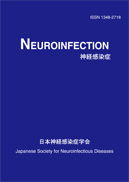Volume 27, Issue 1
Displaying 1-29 of 29 articles from this issue
- |<
- <
- 1
- >
- >|
-
2022Volume 27Issue 1 Pages M1-
Published: 2022
Released on J-STAGE: May 12, 2022
Download PDF (594K)
-
2022Volume 27Issue 1 Pages 1-
Published: 2022
Released on J-STAGE: May 12, 2022
Download PDF (498K)
-
2022Volume 27Issue 1 Pages 6-
Published: 2022
Released on J-STAGE: May 12, 2022
Download PDF (530K) -
2022Volume 27Issue 1 Pages 15-
Published: 2022
Released on J-STAGE: May 12, 2022
Download PDF (715K) -
2022Volume 27Issue 1 Pages 22-
Published: 2022
Released on J-STAGE: May 12, 2022
Download PDF (2458K) -
2022Volume 27Issue 1 Pages 28-
Published: 2022
Released on J-STAGE: May 12, 2022
Download PDF (866K) -
2022Volume 27Issue 1 Pages 34-
Published: 2022
Released on J-STAGE: May 12, 2022
Download PDF (1126K)
-
2022Volume 27Issue 1 Pages 38-
Published: 2022
Released on J-STAGE: May 12, 2022
Download PDF (2341K) -
2022Volume 27Issue 1 Pages 45-
Published: 2022
Released on J-STAGE: May 12, 2022
Download PDF (2366K)
-
2022Volume 27Issue 1 Pages 52-
Published: 2022
Released on J-STAGE: May 12, 2022
Download PDF (642K) -
2022Volume 27Issue 1 Pages 56-
Published: 2022
Released on J-STAGE: May 12, 2022
Download PDF (225K) -
2022Volume 27Issue 1 Pages 60-
Published: 2022
Released on J-STAGE: May 12, 2022
Download PDF (309K) -
2022Volume 27Issue 1 Pages 64-
Published: 2022
Released on J-STAGE: May 12, 2022
Download PDF (464K)
-
2022Volume 27Issue 1 Pages 70-
Published: 2022
Released on J-STAGE: May 12, 2022
Download PDF (616K) -
2022Volume 27Issue 1 Pages 75-
Published: 2022
Released on J-STAGE: May 12, 2022
Download PDF (1788K) -
2022Volume 27Issue 1 Pages 80-
Published: 2022
Released on J-STAGE: May 12, 2022
Download PDF (237K)
-
2022Volume 27Issue 1 Pages 85-
Published: 2022
Released on J-STAGE: May 12, 2022
Download PDF (247K)
-
2022Volume 27Issue 1 Pages 90-
Published: 2022
Released on J-STAGE: May 12, 2022
Download PDF (3307K) -
2022Volume 27Issue 1 Pages 99-
Published: 2022
Released on J-STAGE: May 12, 2022
Download PDF (1310K) -
2022Volume 27Issue 1 Pages 104-
Published: 2022
Released on J-STAGE: May 12, 2022
Download PDF (558K)
-
2022Volume 27Issue 1 Pages 111-
Published: 2022
Released on J-STAGE: May 12, 2022
Download PDF (1017K) -
2022Volume 27Issue 1 Pages 115-
Published: 2022
Released on J-STAGE: May 12, 2022
Download PDF (1211K) -
2022Volume 27Issue 1 Pages 124-
Published: 2022
Released on J-STAGE: May 12, 2022
Download PDF (2079K)
-
2022Volume 27Issue 1 Pages 131-
Published: 2022
Released on J-STAGE: May 12, 2022
Download PDF (365K)
-
2022Volume 27Issue 1 Pages 138-
Published: 2022
Released on J-STAGE: May 12, 2022
Download PDF (528K) -
2022Volume 27Issue 1 Pages 143-
Published: 2022
Released on J-STAGE: May 12, 2022
Download PDF (210K)
-
2022Volume 27Issue 1 Pages 148-
Published: 2022
Released on J-STAGE: May 12, 2022
Download PDF (884K)
-
2022Volume 27Issue 1 Pages 154-
Published: 2022
Released on J-STAGE: May 12, 2022
Download PDF (715K) -
2022Volume 27Issue 1 Pages 159-
Published: 2022
Released on J-STAGE: May 12, 2022
Download PDF (532K)
- |<
- <
- 1
- >
- >|
